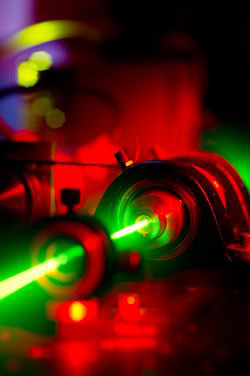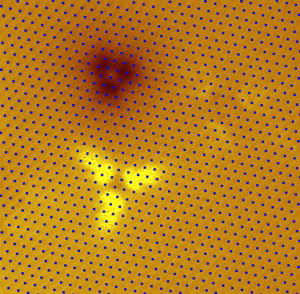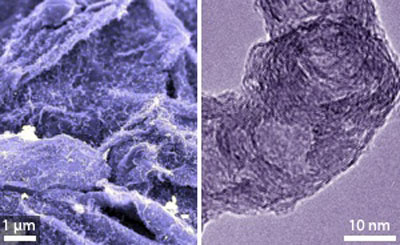If you were to look at a carbon nanotube with the naked eye you wouldn't see much more than black powder, but now a team of EU-funded scientists has developed a novel way of making these multi-purpose nanotechnology building blocks more visible.
Jul 11th, 2011
Read more
CEA-Leti and Entegris, a provider of critical products and materials used in advanced high-technology manufacturing, have signed a two-year agreement to study cross-molecular contamination to and from semiconductor wafers and containers.
Jul 11th, 2011
Read more
Imec announces that it has successfully fabricated implant-free quantum-well (IF-QW) pFETs with an embedded silicon-germanium (SiGe) source/drain. These devices show an excellent short channel control and a record logic performance.
Jul 11th, 2011
Read more
Researchers at Columbia Engineering School have built optical nanostructures that enable them to slow photons down and fully control light dispersion. They have shown that it is possible for light (electromagnetic waves) to propagate from point A to point B without accumulating any phase, spreading through the artificial medium as if the medium is completely missing in space. This is the first time simultaneous phase and zero-index observations have been made on the chip-scale and at the infrared wavelength.
Jul 11th, 2011
Read more
Pioneering partnership between the UAlbany NanoCollege and SEMATECH will lead national push to accelerate solar energy research, development and manufacturing.
Jul 11th, 2011
Read more
Imec and its 3D integration partners have proven the potential of 3D integration of a commercial DRAM chip on top of a logic IC for next-generation low-power mobile applications. Imec's applied 3D EDA (electronic design automation) tools including thermal models have proven to be valuable means to design next-generation 3D stacked ICs.
Jul 11th, 2011
Read more
Imec today announced that it has broadened its research program with SUSS MicroTec to develop an in-fab approach to EUV (Extreme Ultra-Violet) mask integrity. The extended collaboration builds on the success of the mask cleaning processes of record collaboration between HamaTech APE GmbH, a wholly-owned subsidiary of SUSS MicroTec, and imec, which started in 2009.
Jul 11th, 2011
Read more
 Scientists at the University of Glasgow have, for the first time, been able to drag light by slowing it down to the speed of sound and sending it through a rotating crystal.
Scientists at the University of Glasgow have, for the first time, been able to drag light by slowing it down to the speed of sound and sending it through a rotating crystal.
Jul 11th, 2011
Read more
 An electroactive polymers that remembers its shape has potential applications in cell biology and organic solar cells.
An electroactive polymers that remembers its shape has potential applications in cell biology and organic solar cells.
Jul 11th, 2011
Read more
Seventeen partners from eight European countries work on ORION (Ordered inorganic-organic hybrids using ionic liquids for Emerging applications), funded by the Seventh Framework Programme of the EU. Coordinated by CIDETEC (Centre for Electrochemical Technologies) in the Basque Country, the project aims to explore possible combinations of organic and inorganic materials designed to provide better photovoltaic solar panels and batteries that store energy more efficiently.
Jul 11th, 2011
Read more
 Charge density in topological insulators can be tuned through defect control alone.
Charge density in topological insulators can be tuned through defect control alone.
Jul 11th, 2011
Read more
 The growth of carbon nanofibers on graphene sheets by chemical vapor deposition shows promise for producing high-performance electrode materials.
The growth of carbon nanofibers on graphene sheets by chemical vapor deposition shows promise for producing high-performance electrode materials.
Jul 11th, 2011
Read more
Scientists working within the European Commission Joint Research Centre, Institute for Health and Consumer Protection (JRC-IHCP) developed a procedure for the efficient separation, size determination, chemical characterization and quantification of the relative number of particles of different size starting from complex gold nanoparticle mixtures.
Jul 11th, 2011
Read more
New MIT-developed materials make it possible to produce photovoltaic cells on paper or fabric, nearly as simply as printing a document.
Jul 11th, 2011
Read more
University of Toronto researchers have derived inspiration from the photosynthetic apparatus in plants to engineer a new generation of nanomaterials that control and direct the energy absorbed from light.
Jul 10th, 2011
Read more
Researchers at Columbia Engineering School have built optical nanostructures that enable them to engineer the index of refraction and fully control light dispersion. They have shown that it is possible for light (electromagnetic waves) to propagate from point A to point B without accumulating any phase, spreading through the artificial medium as if the medium is completely missing in space. This is the first time simultaneous phase and zero-index observations have been made on the chip-scale and at the infrared wavelength.
Jul 10th, 2011
Read more





 Subscribe to our Nanotechnology News feed
Subscribe to our Nanotechnology News feed